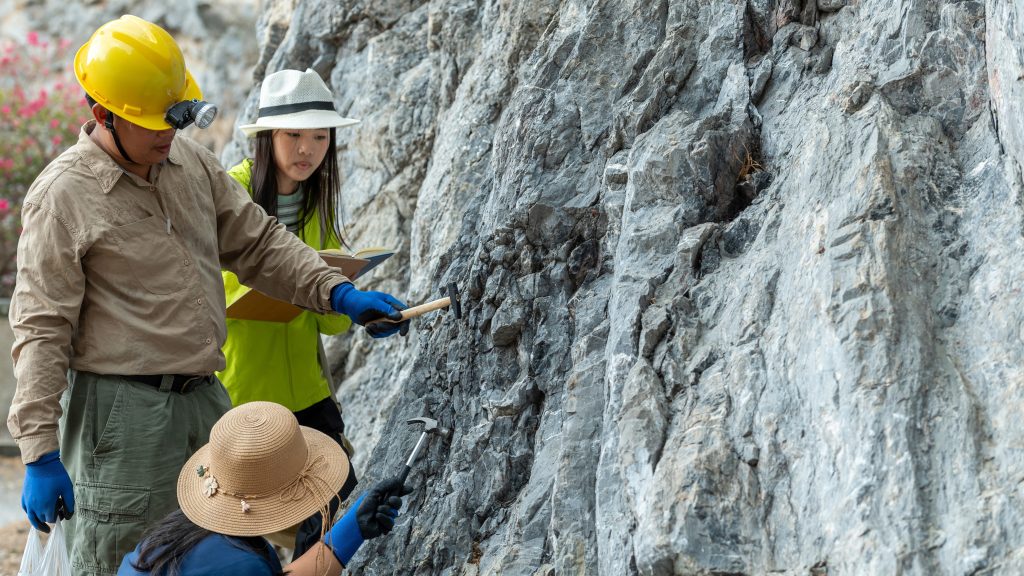A collaborative research and education hub that brings together experts across geoscience and related fields to advance our understanding of earthquake processes and apply that knowledge to reduce their impacts on society in California and beyond.
The Statewide California Earthquake Center (SCEC) collaborates with academic, government, industry, and other organizations to advance earthquake science, community resilience, and education by: (1) Gathering and analyzing data from field observations and laboratory experiments. (2) Developing system-level models and simulations of earthquake processes to synthesize knowledge as a physics-based understanding of seismic hazard. (3) Communicating that understanding to expand knowledge and reduce earthquake risk.

SCEC provides comprehensive, validated models of earthquake processes that inform mitigation and educational approaches to greatly reduce earthquake losses.

SCEC develops and shares cutting-edge earthquake system science to enhance California’s resilience and to educate and inspire future scientists.

SCEC is a consortium of institutions and over a thousand individuals. A leadership team guides our programs and fosters collaboration to fulfill the Center’s mission.
In 1991, the Southern California Earthquake Center (SCEC) was established with funding from National Science Foundation (NSF) Science & Technology Center program and the U.S. Geological Survey (USGS). Over the next decade SCEC integrated multidisciplinary data on earthquakes for Southern California into a framework to address public concerns about future events following the 1992 Landers and 1994 Northridge earthquakes.
With funding from the NSF, USGS, and other sources, SCEC continued its focus on Southern California through multiple phases: SCEC2 (2002-2007), SCEC3 (2007-2012), SCEC4 (2012-2017), and SCEC5 (2018-2023). Each phase contributed significantly to earthquake science and community resilience. SCEC has become one of the world’s largest geoscience collaborations, involving at times over 1000 scientists at more than 90 organizations.
For over 30 years, SCEC has made substantial progress in understanding seismic hazards and developing models that inform mitigation strategies, focusing on the interconnectedness of seismic events and enhancing predictive models, and integrating new technological advancements into earthquake research. SCEC expanded research opportunities for students through innovative internship programs and educated the public about earthquakes and preparedness by leading the Earthquake Country Alliance in California and coordinating Great ShakeOut Earthquake Drills globally.
In September 2019, the NSF Division of Earth Sciences announced an open competition for earthquake research centers. With broad community input, this led to the formation of the Statewide California Earthquake Center (SCEC) in 2023, which expanded SCEC’s geographic scope to encompass the entire transform plate boundary system of California.
As the first NSF Geohazards Center and with continued funding from the USGS, the Statewide California Earthquake Center continues SCEC’s legacy of leveraging cutting-edge research, collaborative efforts, and advanced techniques to provide comprehensive, validated models of earthquake processes that enhance resilience throughout California and beyond, while educating and inspiring future scientists.
Upcoming Meetings and Events
The SCEC community’s ongoing collaboration, both internally and with external stakeholders, is crucial for progress in earthquake science, education, and preparedness. SCEC actively facilitates these interactions through various events throughout the year.
Acknowledging SCEC Support and Use of Community Products
SCEC.org content (images, audio, video, etc.) is generally free for educational and informational use, with attribution to SCEC and the original author(s). Please follow the established guidelines for crediting SCEC, our funders, and product authors.
The SCEC logo represents the Center visually and functions as its official graphic identifier. The logo and associated brand assets should be used for official SCEC communications and by recipients of SCEC support to acknowledge that support, assistance, or affiliation.
The SCEC logo may be used without prior written consent to: (1) acknowledge receipt of SCEC support, (2) link to the SCEC website, and (3) acknowledge SCEC assistance or affiliation.
For any other use beyond these stated purposes, please obtain written consent from SCEC beforehand. To request consent, email a description of the intended use to SCEC.
Download the SCEC logo and follow the SCEC Brand Guide for proper usage. If used on a digital product, the SCEC logo should link to www.scec.org.